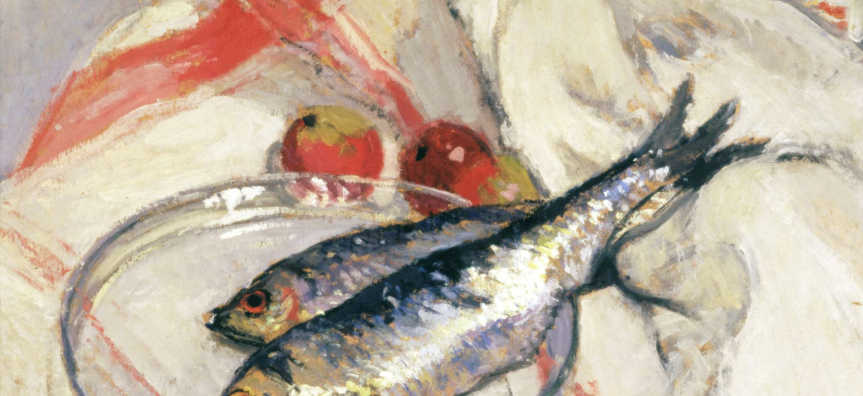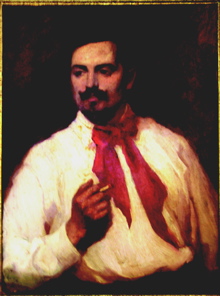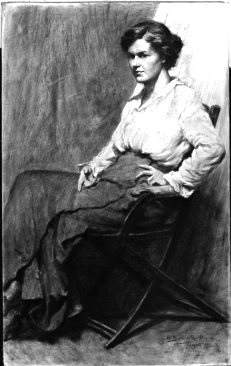
Antonio Dattilo-Rubbo and his Students
We have collected together recollections, personal accounts and stories by those who knew Dattilo-Rubbo well.
Together they serve to provide an insight into his character, his teaching methods, and the bond he established between teacher and student, that has led to him being so well loved by those who knew him.
Recollections by Tom Bass (1916 - 2010)
Tom Bass studied drawing as a young man with Antonio Dattilo-Rubbo from 1937 to 1940. He looks back on a 60-year career as sculptor and art teacher himself. Renowned for his commissions and public sculptures, Bass founded the Tom Bass Sculpture Studio School in 1974. He continued teaching students in his school in Erskineville, Sydney – and the tradition of evening drawing classes well into his 90s. Tom Bass' work as a sculptor has been concerned with communities, namely schools, universities and government and corporate and religious institutions.
Bass developed his philosophy of working as a sculptor in making totemic forms and emblems, namely work expressing ideas of significance to particular communities or to society at large. Examples of his work include The Trial of Socrates and The Idea of a University at Wilson Hall, Melbourne University, the winged figure of Ethos in Civic Square, Canberra, representing the spirit of the community and the Lintel Sculpture at the National Library in Canberra, representing the "idea" of Library.
In 1989, Tom Bass was made a member of the Order of Australia for his services to sculpture. We are very grateful that Tom Bass took time to share his memories and recollections of his time as a student with Antonio Dattilo-Rubbo. Brigitte Banziger and David Hulme spoke with him in his studio in October 2008. “I regard what I learnt from Rubbo as the fundamentals for me. I didn’t need to learn it from anyone else. He is my primary teacher. I studied drawing with him, and I am heavily influenced by his teaching principles, in fact, I am teaching the same principles. I even find myself using the same words!
When I studied with him, it was almost like I studied drawing for sculpture. Rubbo’s emphasis was on form: first we would have to draw the silhouette of the figure in charcoal – which could easily be rubbed off - and then find the rhythms in the pose. You had to find the overlapping rhythms in the pose of the model, only then you would start drawing. With these overlapping rhythms you would find the cardinal points (a typical expression of Rubbo’s), and with slight adjustments, you could get the proportions right. You had to find the movement. This was so like sculpture drawing.
Dattilo-Rubbo was the best art teacher of his generation. In a way, he liberated students so they felt they could go their own way. That was part of Rubbo’s genius: he brought his students to the point where they could be themselves, because his fundamentals were so sound.I had come down from Brisbane to Sydney specifically to learn drawing. A friend advised me to pose as model with the different art schools and listen to how teachers spoke and taught, and that is how I found Rubbo.
Rubbo was very supportive of me. I never paid fees but modelled for his classes. One night, I was trying to find a pose, which was quite difficult. Rubbo just said: ‘Let Frank White (the professional model) do it.’
I remember one night in the school when I was struggling with a drawing, I was in a state of desperation to get it right, and I was so uptight. I thought, if that old bastard (Rubbo at the time was close to 70) comes near me, I’ll storm out. When Rubbo eventually approached me, he just touched my shoulder and said “Be calm, Bass, like the moonlight on the water.’ He was just so able to read your mood, he was an intuitive and enthusiastic teacher who was passionate about us learning from him. I adored the man; but that just sealed it for me.
Dattilo-Rubbo really affected me. He had a genuine response to the world which was unmistakeably Italian. I believe he cultivated his Italianness and wore it as a badge. For example, once when he was searching for an English word, he said to me: ‘You know, Bass, I have been longer in this country than you, and I still can’t speak the language’. The title ‘Cavaliere’ conferred to him by the Italian government was very important to him, he was really proud of it.
Some of his expressions were ‘Are you perspiring yet?’ or he would come into the studio, fling open the curtains with a flamboyant gesture and remark ‘I smell the maps’, meaning that the students were merely drawing outlines rather than drawing as he was teaching it. And when he was in the mood for a smoke from his tobacco jar with a pink tassel, during a break he would say to me: ‘Bass, would you like a dip from Pandora’s vase?’
Dattilo-Rubbo’s need to teach us was paramount. I suspect that his teaching fundamentals stemmed from his own art studies in Rome and Naples. You could say that we have here a tradition of understanding drawing that reaches from the 19th to the 21st century. I can find no contradictions in what Rubbo taught me and how I continue to teach. "
More Recollections of Dattilo-Rubbo by Students and Friends
The following recollections are held in the archives of the Manly Art Gallery & Museum. This portrait of Antonio Dattilo-Rubbo was painted by Miriam Moxham in 1909 and is now part of the by the Manly Art Gallery & Museum collection.

Dora Toovey, F.R.A.S.: Signor Dattilo-Rubbo
I first encountered Signor Dattilo-Rubbo at the Royal Art Society School where he taught drawing at 76 Pitt Street, Sydney, at evenings. He was a most remarkable teacher – armed with a feather duster which he applied lustily to charcoal drawings which displeased him. Talking incessantly to make his point and swooping on a student, he would demand “Do you know what you are drawing?” “Yes Signor”. He continues “You see it and you know it, eh? – Well DRAW IT” and he would then throw a drape over the subject and leave the student staring into space, trying to remember what he said he knew.
This method of teaching was designed to sharpen the student’s observation and wits, to retain the image and impression of the character of the subject – rhythm, line, mass and action. Yes he was a colossal teacher of drawing!
As well as teaching at the Royal Art Society, Rubbo had his own painting school, and to Signor Rubbo must be given the credit of encouraging the post-impressionist movement in art in Australia. It was to his studio that a young art student, Nora Simpson, returned in 1913 from Europe, with exciting prints of the post-impressionists. Quote from Robert Hughes ‘Art of Australia” on Nora Simpson: “She became a ‘star’ at Dattilo-Rubbo’s and her fine grip on post-impressionist principles strongly influenced not only Wakelin, but two other students, Roy de Maistre and Grace Cossington Smith. “ Daubs of pure color were placed in juxtaposition, and in some of his landscapes we see the use of heightened color. In a small head study of Dattilo-Rubbo by Betty Morgan (one of his students) we see the use of color experiment as applied to panes and masses.
The students in those days, both at Rubbo’s Royal Art, Ashton’s and Watkins’ were very alive to experimentation, and we formed a club where we could exchange ideas. For some reason Rubbo was very averse to this, the name ‘Ashton’ was anathema to him: “I could jumpa on his coffin’ he once said. His likes and dislikes were very forcefully expressed, and such was his charm that he rarely lost an argument. On the rare occasions when he did his soulful dark eyes would put on a melting look, and he would plead “I do not understanda de Eng”.
He was a very warm person and devoted to his sons; he often made us laugh with the slang phrases he picked up from the boys. “That is where you comer de gutza” he was overheard to remark to a vice-regal person who was trying to identify art without a catalogue. We laughed, but Rubbo stuck to his guns “It is ok. My son Syddie say ‘de Gutza’ and he go to de Grammar.”
Many of our black and white artists and cartoonists, Unk White, George Finey, Jack Baird, to name a few, suffered under Rubbo’s feather duster.
Yes he was a great teacher!
After Watkins’ classes Rubbo’s was the noisiest, but Rubbo made most of the noise.
Brisk of manner, olive-skinned, with merry brown eyes and a clipped pointed beard, he was always in a state of despair over something – work not going right, models not keeping appointments, food on the stove burning.
On Sunday mornings he took fencing lessons with an expert, a tall thin grey Italian with sad eyes, a … beard so sharpened to a point that it looked dangerous, and moustache-ends waxed and curled to a rapier edge that almost stabbed into the brim of the large grey slouch hat he wore turned up on one side in cavalier fashion.
Invited there one morning to watch Rubbo fence with the ‘Professor’, as Rubbo called him, I sat on the model stand to see combat. After much pacing up and down and measuring of distances, Rubbo went so briskly to work that I felt sure he would stab his opponent to the heart any minute. After each bout much back-slapping went on, and what I gathered were lavish compliments in Italian. We then retired to the living-room to eat a special dish, prepared by the Professor, of poached eggs garnished with capers and swimming in a poo of olive oil, which turned my stomach with every mouthful. Black coffee as only the Professor could make it, according to Rubbo, completed the meal.
The Professor sat back with a cheroot, bowing graciously to compliments lavished on him by Rubbo for his culinary arts. With a stomach full of eggs and capers Rubbo took a sentimental turn about himself. “I paint the old man’s head, I paint the wrinkles. Nobody cares. Who is ‘Rubbo’? Nobody. Bah!! He always referred to himself as ‘Rubbo’. ‘Ah, Rubbo, you are no good. You teach the students; what for? Nothing.”
The professor confirmed that also with a nod. Having got all that off his chest, Rubbo picked up his guitar and sang a merry Italian air. “Ah, he likes that”, Rubbo said, and continued to sing to the Professor, who was swaying slightly with closed eyes, and smiling faintly. When Rubbo laid down the guitar, the Professor rose, and bowing from the waist, left me to do the washing-up.
“He was a great fencing master in Italy. He left there with a broken heart when the girl he loved married someone else”, Rubbo told me, and added ‘Ah, Rubbo, you mast never have the broken heart!’. When Rubbo married a particularly handsome girl of Spanish type, with blue-black hair, a son was born. Rubbo was so proud that he named him Mark Anthony Dattilo, and pushed him around Manly in a pram with ribbon streamers flying the Italian colours.
Interviews by Sydney Rubbo
In 1969, Antonio Dattilo-Rubbo’s son Sydney Rubbo interviewed some of his father's former students. The notes are held in the archives of the Manly Art Gallery & Museum, the tapes by the Art Gallery of NSW.

- Grace Cossington Smith remembers how Dattilo-Rubbo described the bedroom of Van Gogh, with yellow walls, red carpet and red ceiling. She painted an interior based on these colours and took it to the studio – from then on, Dattilo-Rubbo called her Mrs Van Gogh. She thought Dattilo-Rubbo was a wonderful teacher who inspired his students to go their own way.
- George Duncan was interested in colour and pure draughtsmanship.
- After the war, Dick Gates came back with new ideas inspired by Georges Seurat using colour dots and dashes. Dattilo-Rubbo responded enthusiastically to these, even though Gates had forgotten how to draw – which Dattilo-Rubbo did not mind.
- James Jackson was a fine draughtsman, known for his line drawing and landscapes, while Dattilo-Rubbo helped him with tonal values. In Paris, Jackson and Dattilo-Rubbo shared a studio. Jackson was small of stature and had a high voice. Once, the landlady accused Dattilo-Rubbo of having a woman in the studio – until she heard James Jackson speak. Another time, James Jackson was banging on the studio floor to attract attention – apparently a model had collapsed on top of him and he being small could not get out from under her.
- Dattilo-Rubbo called Margaret Coen ‘gunner’ – he said that one day she would go boom.
- Alison Rehfisch pointed out that Dattilo-Rubbo took students to be friends. He was able to understand a student’s particular view and let them express their own ideas without imposing his own ways. Rehfisch thought Dattilo-Rubbo to be tolerant, sympathetic and generous, between the old and the new. She learnt from him the heavy impasto technique.
- Janna Bruce believed that Dattilo-Rubbo’s greatness was in inspiring his students. He had the power the make students use their imagination. He was broadminded and interested in his students, and he had a presence that dominated the studio. This was also apparent in everyday life, getting special treatment from shopkeepers and tradespeople, and women just adored him.
- Roland Wakelin had moved in 1912 from New Zealand to Australia, where he joined the Royal Art Society and eventually met Dattilo-Rubbo - an affectionate man who had a stimulating effect and an infectious enthusiasm. Everyone loved him, even though he was critical and would wipe out poor drawings with a feather duster – but he was fair to his students. Dattilo-Rubbo boasted that he would have great pleasure of dancing on the grave of his rival Julian Ashton.
- Norah Simpson came back with impressionistic ideas which Dattilo-Rubbo liked very much and which he encouraged his students to take on board.
- Over this developed an argument with the Royal Art Society, as they did not want to include in the 1918 exhibition an impressionistic painting by Roland Wakelin. Dattilo-Rubbo went so far as to challenge C.S. Tindall to a duel (with pistols, swords or fists) over this matter. The Royal Art Society relented and Dattilo-Rubbo got his student’s painting included in the exhibition.
Other Famous Students
Below is a list of Dattilo-Rubbo's students (from the catalogue to the retrospective exhibition 1980/81 at Manly Art Gallery & Museum.)
- Earle Backen 1927 - 2005
- Jack Baird
- John Banks 1883 - 1945
- Neville Barker working 1930s
- Marjory Barnard
- Tom Bass 1916 -
- Elizabeth Blaxland
- Janna Bruce, studied and taught with Dattilo-Rubbo school from 1925-35
- Jessie Booth
- James Cant 1911 - 1983
- Wolfgang Cardamatis 1917 -
- Evelyn Chapman A. 1888 - 1961
- Albert Clarke
- Claire Clinton
- Margaret Coen 1913 - 1993, studied with Dattilo-Rubbo from 1928-1929
- Grace Cossington Smith 1892 -1984
- Roy Dalgarno 1910 - 2001
- Alice Danciger 1914 - 1991
- Roy De Maistre 1894 -1968
- George Duncan 1904 -1974
- Percy Eagles 1900 - 1967
- Frances Ellis 1900 - 1971
- Joy Ewart 1916 - 1964
- George Finey 1895 - 1987
- John R. Flanagan 1894 - 1964
- Cedric Flower 1920 - 2000
- Donald Friend 1915 - 89
- Alfreda Ganinin
- Peggy Garren Brown
- Althea Glasby
- Beryl Gollen
- Doreen Goodchild 1898 - 1980
- Beryl Grace
- Nils A. Gren 1983 - ?
- Frank Hinder 1906 - 1992
- Frank Hodgkinson 1919 - 2001
- Roy Hodgkinson 1911 - 1993
- Margo Holden
- Florence Hooper
- Hilda Humphrey
- Jean Isherwood 1911 - 2006
- Carlyle Jackson 1891 - 1940
- Dora Jarret 1904 - 1983
- Fred Jessup 1920 - ?
- Ray Kilminster
- Erik Langker 1898 – 1982
- Tony La Spina 1926 - ?
- Gerald Lewers 1905- 1962
- Margo Lewers 1908 - 1978
- Lynette Lee
- Vergil Lo Schiavo 1910 - 1960
- Tempe Manning 1915 - 1954
- Harry McDonald 1914 - 1978
- Hector McDonald
- Leila McNamara 1894 - 1973
- Irene Meagher
- Betty Morgan, studied with Dattilo-Rubbo from 1929-1938
- Miriam Moxham 1885 - 1971
- Arthur Murch 1902 - 1989
- Percy Norton
- Gladys Owen 1889 -1960
- Betty Pierce
- Margaret Pierce
- Roy Piggott
- Alison Rehfisch 1900 –1975
- Roy Rousel 1897-1985
- Audrey Russell
- Elsa Russell 1909 - 1997
- John Santry 1910 - 1990
- Dora Simon
- Norah Simpson
- Maureen Silvester-Brown
- Wallace Thornton 1915 - 1991
- Lesbia Thorpe 1919- ?
- Dora Toovey 1898 - 1990, studied with Dattilo-Rubbo from 1917-1919
- Geoffrey Keith Townshend 1888 - 1973
- Thora Unger
- Roland Wakelin 1887-1971
- Mary Webb
- Unk (Cecil) White 1900 - 1986
